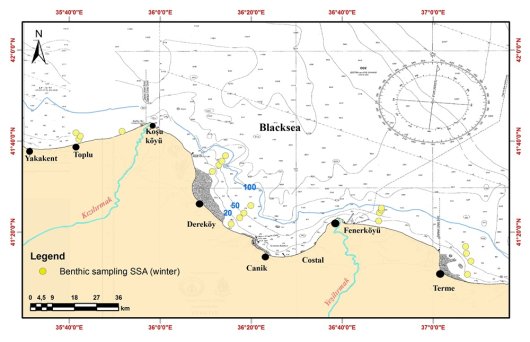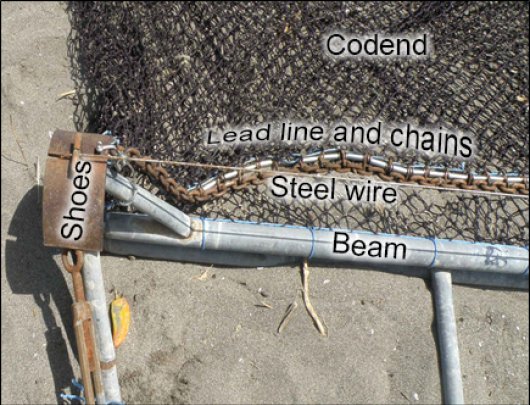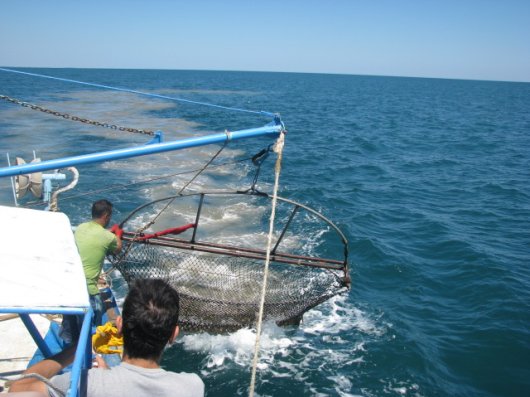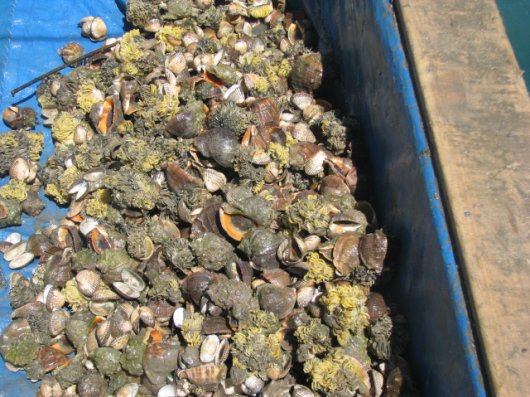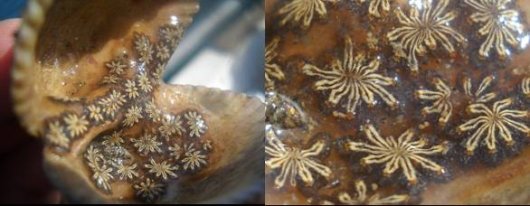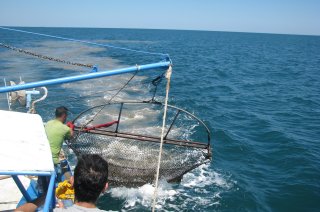
Black Sea case study
In the Black Sea, BENTHIS focusses on the beam trawl fishery for rapa whelks: large fleshy sea snails originating from Japan.
In the Black Sea, they form a pest: rapa whelks (Rapana venosa). Due to the increase in abundance, rapa whelks have gained commercial important since the 1980s in the eastern Black Sea. This fishery is characterised by an important bycatch of juvenile flatfish. The adverse impact of bottom trawling on commercial and non-commercial fauna is a major concern in Turkey and has raised many speculations often without any firm scientific basis.
The BENTHIS study area is the Samsun shelf area, in the southern Black Sea, which has been trawled intensively for a long period. To study the effects of this type of fisheries, researchers conducted monthly surveys between May and November 2013 with a commercial gear (9 cm mesh size) to catch the snails, and reference gear (12 mm mesh size) to study the impact on the rest of the benthic macro fauna. The aims are to study:
- the technical properties of beam trawls used for rapa whelk fisheries.
- the catch per unit effort
- the selectivity of the commercial gear with regard to the fish and macro benthos and
- the monthly variation in by-catch in the beam trawl fishery.
In 2013, the focus was on the fieldwork, so no results are available yet. The figures provide the information on the study area, the gear used and the catch composition. A first minor result is that the researchers discovered a species new to the region, the colonial golden star tunicate (Botryllus schlosseri), living on the inside of empty Anadara cornea shell.
